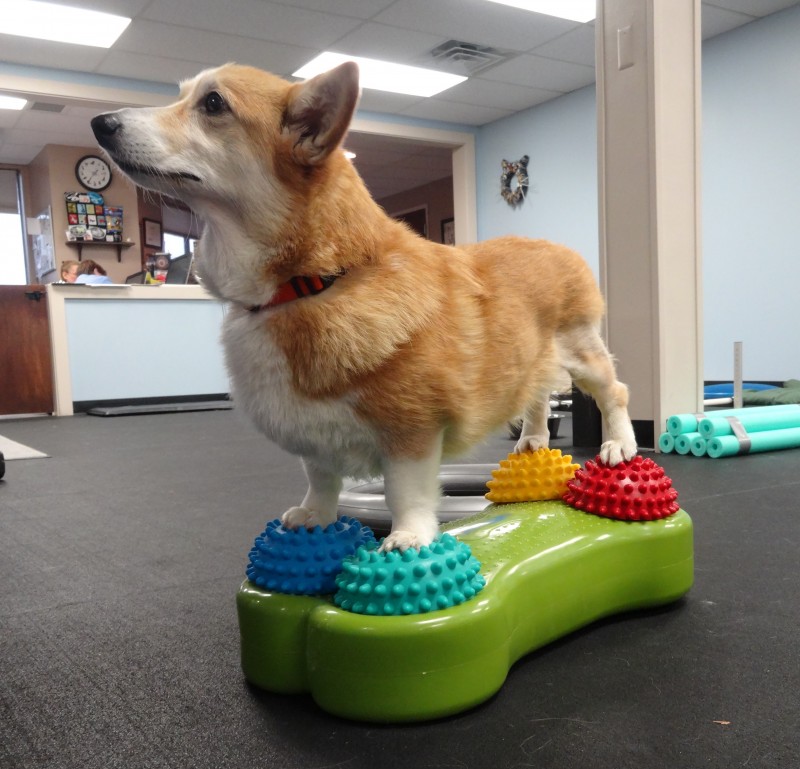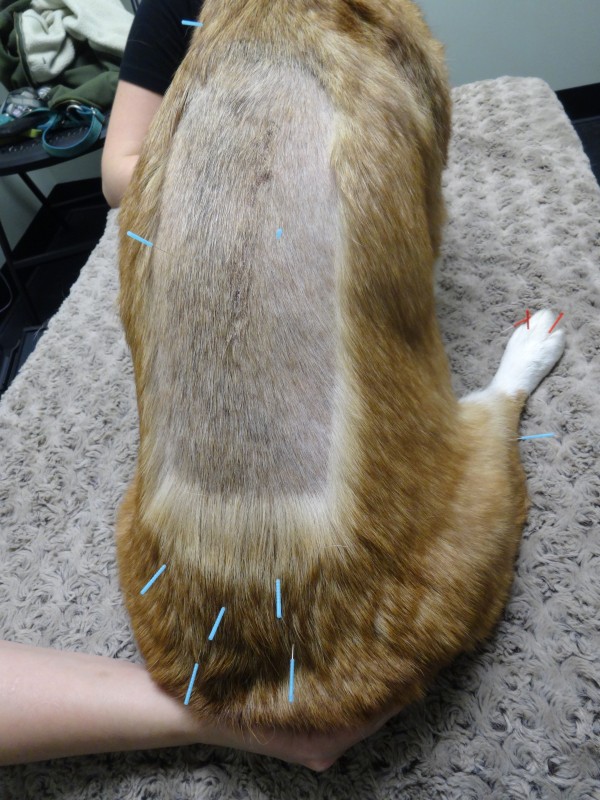Rehabilitation After Surgery for Pets
By Tari Kern, DVM, CCRP, CVMA, CVSMT
Rehabilitation therapy in veterinary medicine is similar to physical therapy in people, but has some significant differences due the variations in the animal’s anatomy and the extreme forces that can be placed on their joints, bones, tendons and muscles. As a result, rehabilitation programs should be developed with veterinary rehabilitation professionals who work closely with your pet’s veterinarian.
When injured and following surgery, rest and controlled activity is very important for our pets. However, the longer the body is inactive, the more muscle atrophy will occur. Realistically, getting back to structured activity is extremely important for the healing process, which is why rehabilitation therapy recommended after surgical procedures.
After a surgery, rehabilitation therapy can be beneficial for animal companions by:
- Reducing inflammation and pain after surgery
- Promoting early weight bearing
- Strengthening supporting tissues
- Decreasing compensatory muscle, myofascial, and back pain
- Providing mental stimulation for pets who have had restricted activity
- Improving coordination and balance
- Reversing muscle atrophy
- Promoting weight loss if needed
- Developing structured homework program
- Safely promoting faster return to function
Types of cases that benefit from rehabilitation therapy after surgery:
- Orthopedic cases – cruciate injury, elbow procedures, hip surgeries, OCD procedures
- Neurologic cases – IVDD, nerve sheath tumor surgeries
- Oncology cases – concurrent pain management assistance, amputation patients
- Soft Tissue cases – wound care, degloving injuries, mass removals involving the underlying muscle tissue
- And many more…
Our Post-Operative Rehabilitation Goals:
- Decreases discomfort (reducing the need for pain medication)
- Strengthens muscles to reverse muscle mass atrophy
- Increases range of motion
Rehabilitation programs are developed for each veterinary patient as a unique individual based on their specific problems and their unique needs in order to clinically progress. Depending on the case, electrical stimulation, therapeutic ultrasound, underwater treadmill, swimming, acoustic compression therapy, massage, laser therapy, acupuncture, veterinary spinal manipulation, a variety of exercises or any combination of these methods may be used in your pet’s program.
For more information on rehabilitation after surgery for pets please visit our website page on Post Operative Care here. While each pet is an individual and rehabilitation programs are customized to each patient, click here to see an example of rehabilitation after a TPLO surgery.
References:
Canine Rehabilitation and Physical Therapy, 2nd Edition. Millis D, Levine D. Elsevier, 2014.
Physical Rehabilitation of the Canine Neurologic Patient. Drum MG. Vet Clin Small Animal, 40, 181-193. 2010.
Effects of postoperative rehabilitation on limb function after cranial cruciate ligament repair in dogs. Marsolais GS, Dvorak G, Conzemius, MG. JAVMA 220 (9), 1325-1330. May 2002.


